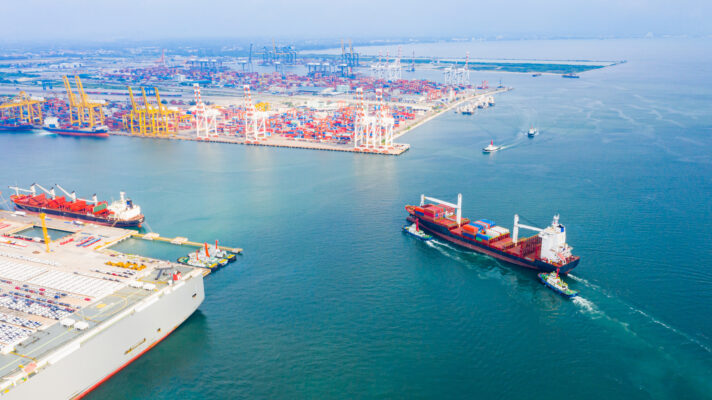In the world of transport, the abundance of options can be confusing, but sea freight stands out for many reasons. In this blog post, we’ll go through five valid reasons why ocean freight is often an excellent choice for your transport needs. From cost-effectiveness and the possibility of large volumes to more environmentally friendly alternatives, ocean freight offers a wide range of benefits. We explore how these factors can influence your logistics decisions and help you optimise your supply chain.
1. Variety of options
When it comes to transporting goods by sea, different options offer flexibility and efficiency for different needs:
- Container freight is one of the most common ways to transport goods. Containers standardize shipments and make loading, unloading and storage efficient.
- Mafi is a flatbed truck designed to transport heavy and bulky goods, such as heavy machinery and vehicles that cannot fit or fit into containers. With Mafi trailers, cargo is driven directly onto the ship, making them the ideal choice for hard-to-handle goods.
- Breakbulk is a traditional form of chartering where large or heavy loads, such as steel beams or large machinery, are loaded directly into the hold or deck of a ship without containers. Breakbulk chartering is essential for many goods that exceed the dimensions or weight limits of containers.
- RoRo (Roll-on/Roll-off) ships are designed to transport goods on wheels, such as cars, tractors and other vehicles. The goods are driven directly onto the ship via a ramp, making loading and unloading fast and efficient.
2. Less restrictions
One of the key advantages of ocean freight is that it has less restrictions on the weight and size of the load. Unlike air freight, for example, where weight and volume are critical factors in determining rates, ocean freight allows larger and heavier goods to be transported economically.
This feature is particularly important for large industrial projects, such as infrastructure construction or the supply of special machinery, where individual components can be very large and heavy. Ocean freight offers the flexibility to plan and execute transports where other alternatives are simply not enough.
3. Global network
Shipping routes extend to every corner of the globe, giving ocean freight a unique position to reach global markets. The world’s major ports are strategically located, facilitating the flow of goods between continents.
This infrastructure enables large and complex supply chains that support international trade and economic cooperation. Through major ports, companies can efficiently manage their supply and meet global demand, which is critical, especially for industries where production lines and markets are geographically dispersed.
4. Energy efficiency
Ocean freight is known for its energy efficiency, as it consumes significantly less energy per tonne transported per kilometre compared to other modes of transport, such as air freight or road transport. This efficiency is partly due to the ability of cargo ships to carry large quantities of goods at a time, reducing the need for multiple, shorter voyages.
Ocean carriers also emit less carbon dioxide per ton than other modes of transport, making them a more environmentally friendly option in the global supply chain.
5. Lower costs
Ocean freight is known to be a cost-effective mode of transport, especially for large and heavy shipments. The ability of large cargo ships to carry huge quantities of goods in a single voyage allows the cost of transport to be spread over a larger volume of goods, which significantly reduces unit costs. In addition, the long routes and planned scheduling of ocean-going cargo ships reduce fuel consumption compared to, for example, shorter and frequently changing air routes.
Fuel savings are a key factor in the cost-efficiency of maritime transport. Cost efficiency makes ocean freight an attractive option for many companies seeking to optimise their logistics costs on a global scale.
Read more on this topic in the following blog posts:
Seaworthy packing guide and container loading planning instructions – Beweship


 Suomi
Suomi